Pradhan Mantri Awas Yojana-Gramin (PMAY-G)
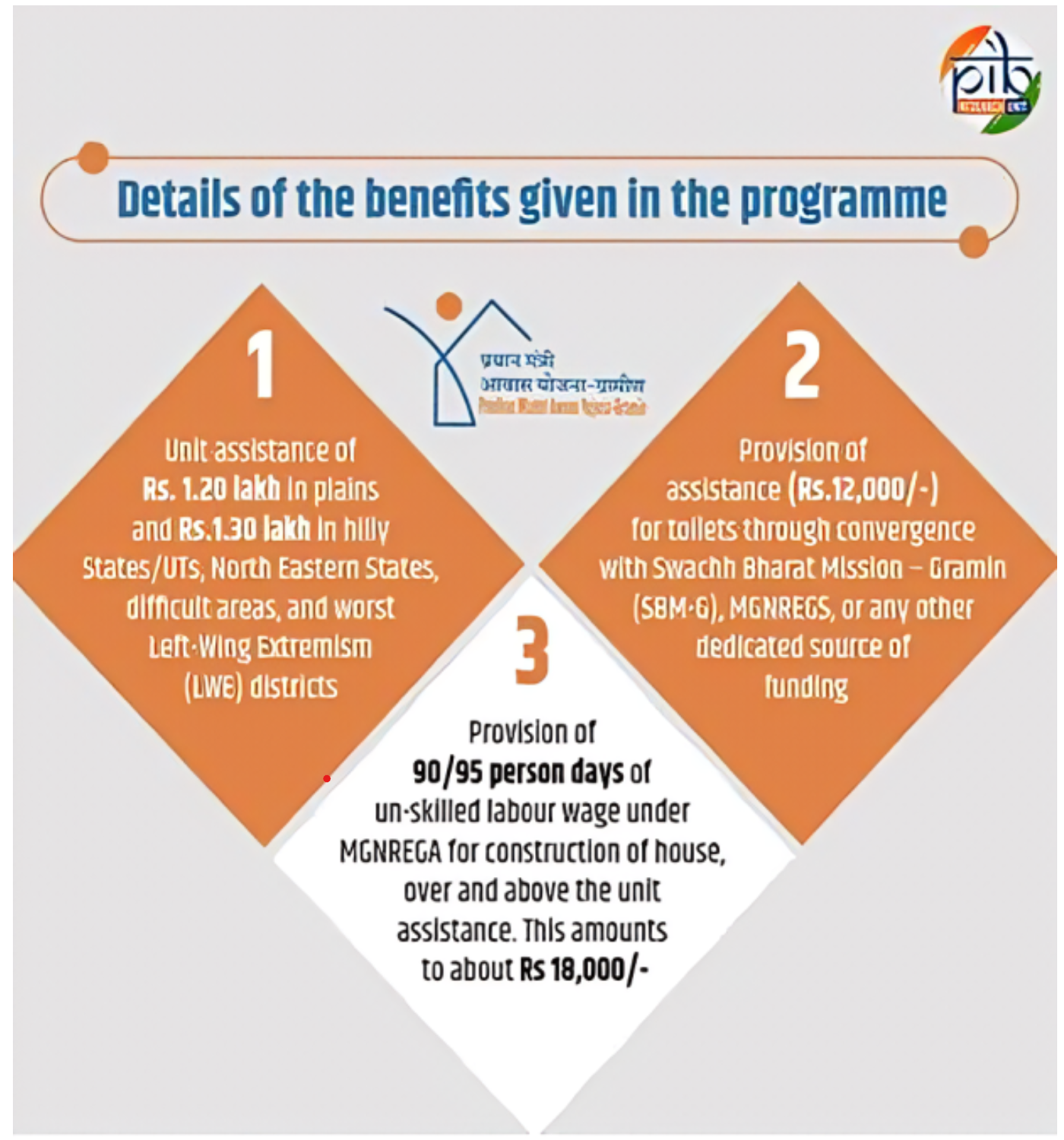
- 09 Oct 2024
Recent Initiatives:
- The Indian government has launched a nationwide survey of kutcha houses.
- Introduction of the Awas Sakhi mobile app to streamline housing assistance.
Purpose of the Kutcha House Survey
- Identify Housing Needs: The survey aims to collect data on families living in kutcha (temporary) houses, enabling targeted support for those in need.
- Support for Awas Sakhi App: The survey will enhance the functionality of the Awas Sakhi app, facilitating the application process and providing beneficiaries with vital housing information.
Overview of PMAY-G
- Launch: Initiated in 2016, PMAY-G aims to provide secure housing for the poorest communities.
- Beneficiary Selection Process: A comprehensive three-stage validation, including the Socio-Economic Caste Census 2011, Gram Sabha approvals, and geo-tagging, ensures that aid reaches those most deserving.
Benefits for PMAY-G Beneficiaries
- Financial Assistance:
- ?1.20 lakh for families in plain areas.
- ?1.30 lakh for families in hilly regions, including northeastern states and union territories.
- Support for Sanitation:
- An additional ?12,000 for toilet construction, aligned with the Swachh Bharat Mission – Gramin or MGNREGS.
- Employment Opportunities:
- Provision of 90/95 days of unskilled wage employment through MGNREGA for house construction.
- Access to Basic Amenities:
- Connections for water, LPG, and electricity facilitated through relevant schemes.
- Cost Sharing Structure:
- Expenses are shared in a 60:40 ratio for plain areas and a 90:10 ratio for northeastern states and selected Himalayan states. The Centre covers 100% of costs for other Union Territories.
Progress Under PMAY-G
- Targets: The government aims to construct 2.95 crore houses.
- Current Status: As of August 2024, 2.94 crore houses have been sanctioned, with 2.64 crore completed, enhancing living conditions for millions in rural areas.
Recent Developments
- In August 2024, the Union Cabinet approved funding for two crore additional houses at existing assistance rates.
- Eligibility Criteria Changes:
- Individuals owning bikes or scooters are now eligible.
- The income limit for eligibility has been raised from ?10,000 to ?15,000 per month.
Future Goals
- This initiative, spanning FY 2024-2029, aims to address ongoing housing demands, benefiting approximately 10 crore individuals by providing safe, hygienic, and socially inclusive housing.
PM Internship Scheme
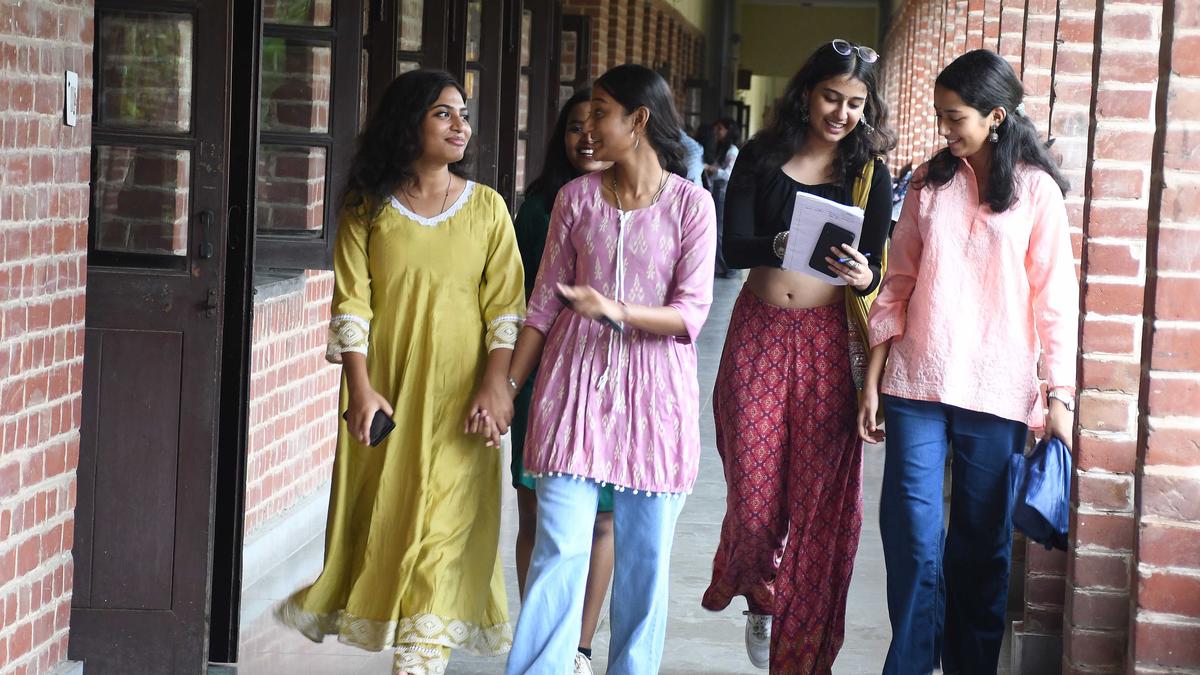
- 04 Oct 2024
In News:
The Prime Minister’s Internship Scheme, announced by Union Finance Minister Nirmala Sitharaman during her Budget speech on July 23, was launched on October 3. The PM Internship Scheme aims to provide internship opportunities to one crore youth in the top 500 companies over the next five years.
Companies will upload their internship positions, and candidates can submit applications starting October 12.
What is the Prime Minister’s Internship Scheme?
The PM Internship Scheme will enhance youth employability in India by offering them hands-on exposure to real-world business environments. The scheme represents a transformative opportunity to bridge the skills gap and drive sustainable growth in India.
A monthly stipend of ?4,500 will be provided to the interns from the central government via DBT (Direct Benefit transfer), with an additional ?500 offset provided by the company’s CSR fund.
Who is eligible for the PM internship scheme?
- Candidates aged between 21 and 24 years who are not engaged in full-time employment are eligible for the one-year internship programme.
- Internships are available to those who have passed class 10 or higher.
- Individuals from families with government jobs are excluded
- The scheme is not open to post-graduates
- A candidate who graduated from premier institutes such as IIT, IIM, or IISER, and those who have CA, or CMA qualification would not be eligible to apply for this internship.
- Anyone from a household that includes a person who earned an income of ?8 lakh or more in 2023-24, will not be eligible.
How to apply for the PM internship scheme?
- Interns can register in the portal and apply for internships. The portal, pminternship.mca.gov.in, is likely to be opened up for youngsters to enroll for consideration by companies on October 12. This window will be open till October 25 for the first batch of internships. Candidates must share and self-certify some data about their educational qualifications and residential pin codes.
- Candidates’ data will be matched with companies’ needs and locations using Artificial Intelligence tools, and a shortlist of candidates will then be generated for companies to consider.
- The portal is designed to streamline the application process and make candidate selection more transparent. Applicants can check the status of their applications in the portal once they have applied to the available posts.
What is the benefit of the scheme?
The scheme is to provide on-job training to youth and an exposure to real-life work environment. The scheme will also benefit the industry by creating a pipeline of skilled, work-ready youth who can be employed post-internship both in large as well as micro, small and medium enterprise.
Poshan Tracker Initiative
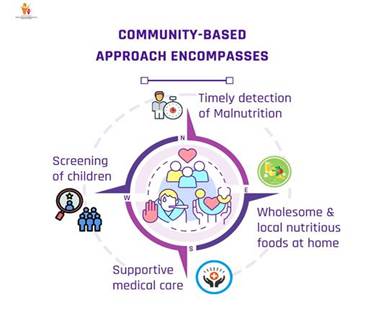
- 05 Sep 2024
In News:
The Ministry of Women and Child Development recently earned the National Award for e-Governance 2024 (Gold) for its Poshan Tracker initiative, which has made significant strides in enhancing child health and nutrition.
About the Poshan Tracker Initiative
The Poshan Tracker initiative focuses on identifying and addressing growth-related issues in children aged 0-6 years. By using real-time monitoring and WHO growth charts, the program ensures that children receive optimal nutrition.
Key components of the initiative include:
- Role of Anganwadi Workers (AWWs): These workers are essential in assessing children's health and implementing necessary interventions when deviations from expected growth are observed.
- Technology Integration: The program employs advanced ICT tools and Growth Measuring Devices (GMD) at Anganwadi Centers (AWCs) to enable precise data collection and regular monitoring.
- Impact: Real-time growth monitoring through the Poshan Tracker has substantially improved child health outcomes in India, benefiting millions of children under the Mission Poshan 2.0 initiative.
Key Features of the Poshan Tracker App
- Comprehensive Overview: The app offers a complete view of Anganwadi Centre activities, including service deliveries and beneficiary management for pregnant women, lactating mothers, and children under six.
- Digitization and Automation: It replaces physical registers used by workers with digital records, thereby enhancing the quality and efficiency of their work.
- Smartphone Provision: Anganwadi workers have been provided with smartphones through the Government e-Market (GeM) to streamline service delivery.
- Technical Support: Each state has a designated nodal person to provide technical assistance and resolve issues related to the Poshan Tracker application.
- Service Accessibility: Migrant workers who registered in their original state can access services at the nearest Anganwadi in their current location.
Rashtriya Poshan Maah 2024
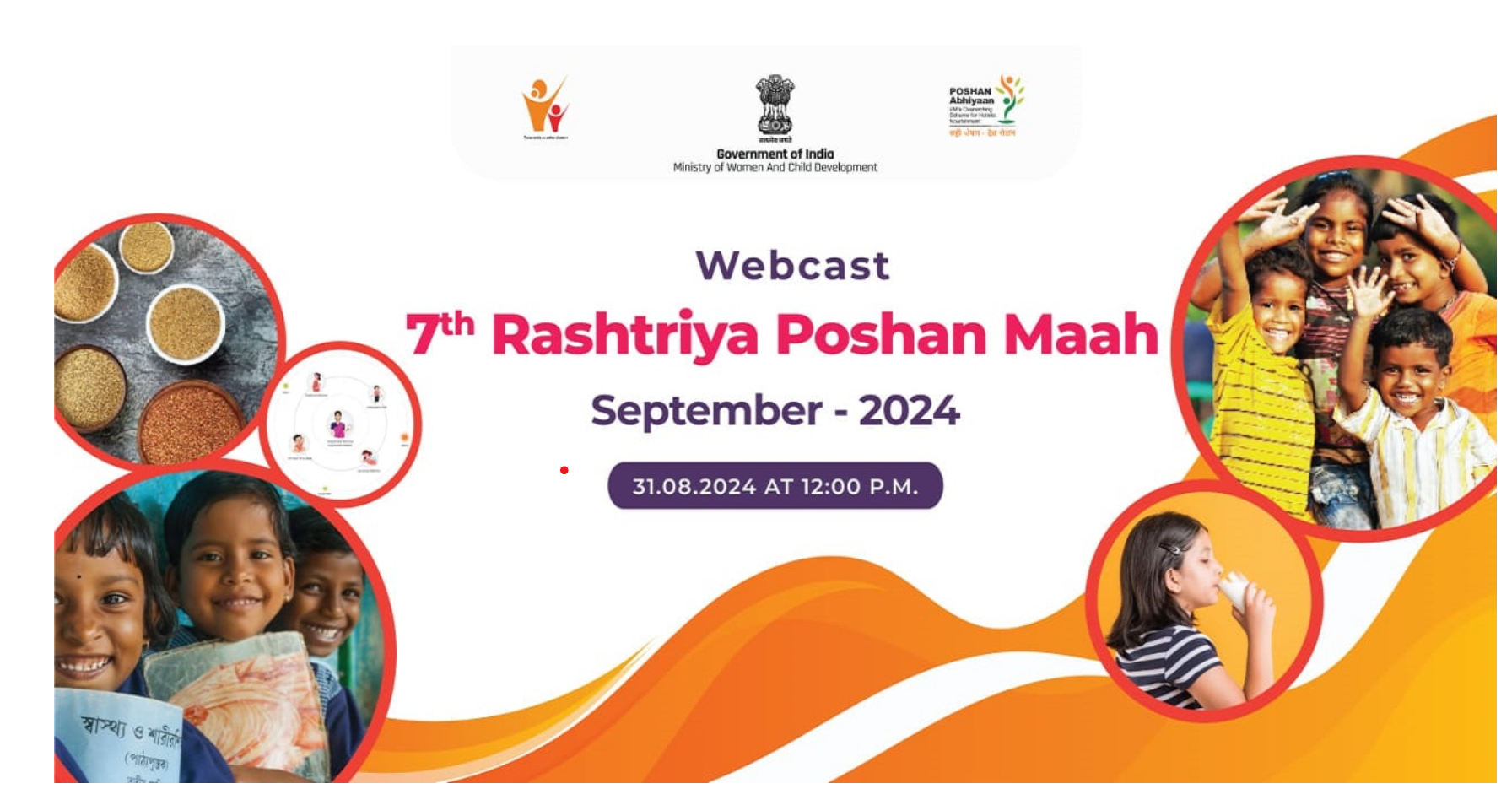
- 06 Sep 2024
In News:
Union Minister of State for Women and Child Development, launched the Rashtriya Poshan Maah 2024 in Dhar district of Madhya Pradesh on 1st September,2024.
Key Highlights:
- As part of the 7th Rashtriya POSHAN Maah, awareness programs are being organized at various levels.
- Under the ICDS (Integrated Child Development Services) Project, complementary feeding activities were conducted at Anganwadi Centres (AWC) Paduck Bagicha, South Andaman.
- Also, at AWC, Champin Nancowrie, Nicobar district (Andaman & Nicobar) under the ICDS Tribal initiative, local food items and nutrition sources were displayed.
- These efforts aim to further the Prime Minister's vision of a ‘Suposhit Bharat’ by conducting diverse large-scale activities, harnessing the potential of Gram Panchayats and Urban Local Bodies.
Rashtriya Poshan Maah:
- The programme is annually celebrated in the month of September, with a different theme each year, primarily focusing on addressing malnutrition by ensuring convergence of various nutrition-related schemes and programmes.
- The objective of the Poshan Maah is to ensure community mobilisation and bolster people’s participation for addressing malnutrition amongst young children, and women and to ensure health and nutrition for everyone.
Poshan Abhiyaan:
- POSHAN Abhiyan (Prime Minister's Overarching Scheme For Holistic Nourishment) focuses on advancing nutritional outcomes for children under six years, adolescent girls, pregnant women, and lactating mothers.
- To cultivate widespread awareness about nutrition at each stage of life, it is celebrated annually as Poshan Maah (1st—30th September) and Poshan Pakhwada (fortnight of March).
- POSHAN Abhiyan (National Nutrition Month) aims to strengthen efforts to end hunger and malnutrition.
- It focuses to improving the nutritional outcomes among children, adolescent girls, pregnant women, and lactating mothers by focusing on prenatal care, diet, and optimal breastfeeding.
- The Ministry of Women and Child Development plans month-long activities under Poshan Maah, focusing on issues such as the hygiene and sanitation, anaemia prevention, maternal and infant health, among others.
- There are outreach programmes, identification drives, camps, and fairs with a special focus on pregnant and lactating women, children below six years, and adolescent girls in order to realise the vision of ‘Swasth Bharat’.
Swachh Bharat Mission averted 60,000-70,000 infant deaths annually: Study
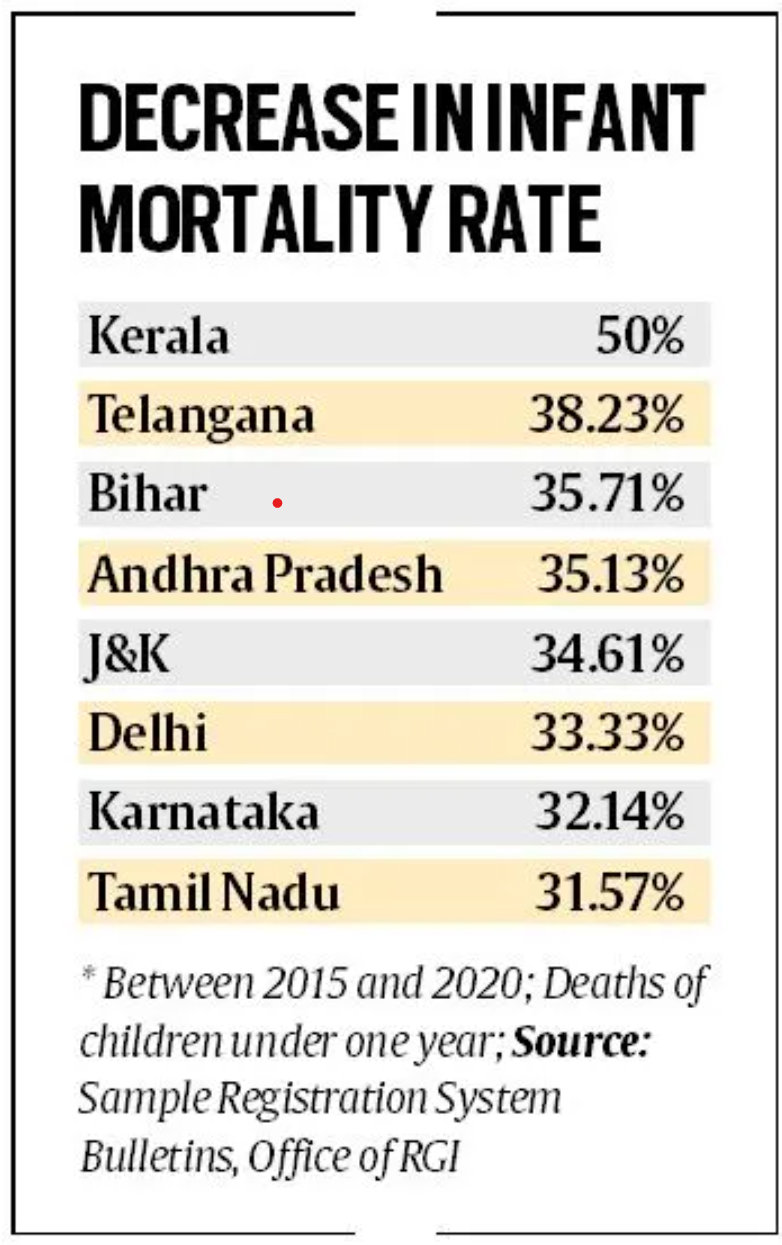
- 09 Sep 2024
- Launched on October 2, 2014, the Swachh Bharat Mission (SBM) has been pivotal in advancing sanitation infrastructure in India.
- By 2020, the mission had facilitated the construction of over 11 crore household toilets under its Grameen component and over 63 lakh individual and 6.36 lakh community public toilets under its Urban component. This extensive sanitation drive aimed at eradicating open defecation and improving public health.
Impact on Infant Mortality
A recent study published in Nature has highlighted the significant health benefits resulting from SBM. According to the report, titled ‘Toilet Construction under the Swachh Bharat Mission and Infant Mortality in India,’ the initiative may have averted approximately 60,000 to 70,000 infant deaths annually between 2014 and 2020. The study, analyzed data from 35 states and 640 districts from 2011 to 2020, focusing on the infant mortality rate (IMR) and under-five mortality rate (U5MR).
Key Findings
- Decrease in Infant Mortality:
- The study established an inverse relationship between toilet access and infant mortality. It noted that districts with increased toilet coverage saw a marked decline in infant deaths.
- In 2003, the average toilet coverage in districts was below 40%, rising to over 60% by 2020. Correspondingly, infant mortality rates fell from an average of 48.9 per 1,000 live births in 2003 to 23.5 per 1,000 live births in 2020.
- Significant Decline:
- The research observed a substantial decline in infant mortality rates from 40 per 1,000 live births in 2012 to below 30 per 1,000 live births by 2019.
- The mortality rate for children under five also dropped from about 44 per 1,000 live births in 2012 to below 30 by 2019.
- Regional Variations:
- Despite the overall improvement, certain regions like parts of Uttar Pradesh, Madhya Pradesh, Odisha, and Andhra Pradesh continued to report higher infant mortality rates, ranging between 45-60 per 1,000 live births in 2020.
Conclusion
The SBM has demonstrably improved sanitation in India, with a notable reduction in infant mortality rates attributed to the increased availability of household toilets. While the mission has achieved significant progress, ongoing efforts and investments in broader public health infrastructure are essential to address persistent regional disparities and sustain health gains.
